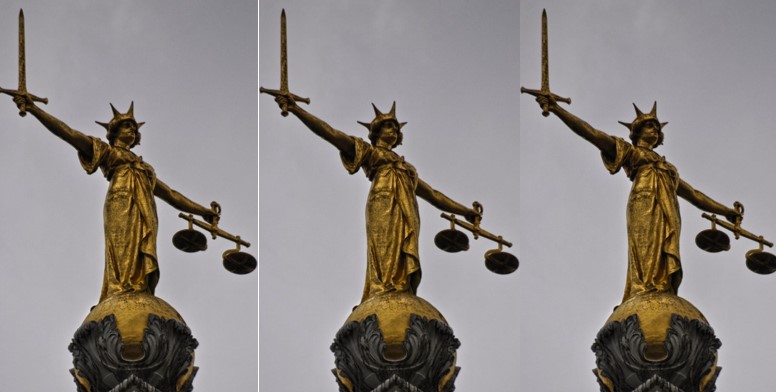By Gray Allan, Falkirk Labour member
In June the Executive Committee of the Scottish Labour Party met in a virtual meeting and in a 5-hour session they agreed a position on the constitutional question for the 2021 Scottish parliamentary elections. Unfortunately, the outcome sets Scottish Labour on a course for further decline.
The net result of the meeting is a platform, Scotland’s future: Scottish Labour’s better alternative, which unfortunately, adopts a completely wrong approach to the National Question in Scotland. “In the last decade”, it says in the opening paragraph, “we have lived through an unprecedented period of extreme instability and risk with multiple and profound society-reshaping events – compressed into an intense and short timescale – which have repeatedly hit the poorest hardest.” It is good to see the Labour Party starting with a class view, albeit that it should be done explicitly – the “poorest” are precisely the working-class community that the Party should represent.
Casino-style banking profits
But it then goes on in this fashion: “These have included the consequences of the global financial collapse of 2008 and subsequent years of austerity, the constitutional upheaval of the independence referendum in 2014 and then the Brexit referendum in 2016 with the consequences of that Brexit referendum yet to play out.” Here, the document is making a fundamental error in equating the greed, mammoth tax-dodging and casino-style profit-taking of bankers – the real causes of the financial crash – with two referendums, the outcomes of which were the results of social and economic crisis and not their cause.
This is not the place to offer a detailed analysis of the Scottish independence referendum of 2014 or the Brexit referendum two years later. But suffice to say that both demonstrated in their own ways the distrust of established politicians on the part of large sections of the population – including working class communities – and an inchoate and desperate yearning for something better. In Scotland, where Labour MPs and councillors had maintained a dominant and what for them personally was a comfortable position for decades, Labour offered no answers to low pay, a housing crisis, Education and health cuts or to other desperate social issues. The SNP, dressed themselves in the garb of fake ‘radicalism’ and won votes that in the past would have gone to Labour; and the result we all know.
Labour has learned nothing
Judging by its new policy document, it looks like the Labour Party in Scotland have learned nothing from its collapse in recent years and the rise of the SNP. Scottish Labour is not a nationalist party so it would have been hard to imagine the SEC agreeing to campaign for a second referendum in which it would have called for a NO vote. But on the other hand, if there is a groundswell of support for a second referendum, the Party cannot justifiably oppose it. More to the point, it must address the motives and genuine aspirations that lie behind the illusions in the SNP. Labour needs to argue that an ‘independent’ capitalist Scotland would be not be ‘free’ of the domination of British and international capitalism and would not be in a position to solve the problems faced by workers.
After the SEC meeting, there was an immediate and very vocal storm of protest from many on the left as well as from the SNP and fellow travellers. Labour was condemned for “a betrayal of democracy” and there were predictions of Scottish Labour’s political annihilation. Those predictions may be borne out, unless Labour answered the charges by a campaign for the socialist transformation of society, in solidarity with the labour movement in England, Wales and Ireland.
SNP claim a mandate for ‘indyref2’
Labour has to understand where the call for a second referendum, ‘Indyref2’ has come from. In fact, it started as soon as the first referendum gave a NO result in 2014. The EU referendum and the 2019 ‘Brexit’ election result have since then turbo-boosted the campaign after something of a hiatus. The SNP have argued that the parties that stood for independence in 2014 (SNP & Greens), now have a majority of seats in the Scottish Parliament, after having a second referendum in their manifestos. They are claiming, therefore, a ‘democratic mandate’ for a second referendum. Holyrood, including Labour, voted for a resolution accepting the right of the devolved Parliament, in agreement with Westminster, to call a second referendum.
As a result of the coronavirus pandemic, it is unlikely that the question of Indyref2 will arise until after the 2021 election. But Scottish Labour’s policy of opposing it will only survive until the ballot boxes close. Current polling shows that the likely outcome of the Assembly election will be much the same as before, with the SNP in power as a minority government supported by Greens, or possibly with an overall majority. Labour will once again be confronted by the question of the referendum.
‘socialism’ barely mentioned
Scottish Labour’s alternative vision talks about bringing power “closer to the people”, about “redistributing power and wealth” across society, about planning the economy for the future well-being of the people, etc, etc. But it seriously lacks any explicitly socialist edge. It only mentions “socialism” twice, in the twice-repeated statement, “Scottish labour is a democratic socialist party”. Nowhere else.
Yet it mentions the “United Kingdom” four times and the “UK” fifteen times, in a six-page document. Whatever impression the authors wanted to give, the message that will be read in this policy is that Scottish Labour is unmistakeably a unionist Party first and a socialist party second. There is little chance that will win back the voters lost in the last ten years.
While the so-called ‘Corbyn Revolution’ had some impact on the Labour Party and on Labour support in Scotland, it was not as marked as it was in England. The independence referendum campaign of 2014 captured a large element of the radicalised youth, the same kind of young people who later in England poured into the Labour Party after Jeremy Corbyn’s election as Party Leader. Scottish youth have been sold the idea that there was a way to a socialist future only if Scotland was cut free from the domination of “English Tories”. As if there were no such thing as a Scottish Tory!
Labour in Westminster drives to the right
Despite the pro-Corbyn movement being more muted, the adoption of more radical policies and a radical manifesto in 2017 and 2019 put the Labour Party in Scotland in a position where it at least had a platform from which it could begin to rebuild trust among working class people. Now, with the party in Westminster moving rapidly rightwards, into a comfortable ‘Establishment’ niche, and with the Party in Scotland at sixes and sevens over nationalism, it has unfortunately set course for an even greater decline.
The tragedy of the SEC policy document is that much of it could have come from the SNP. Without a clear socialist programme and a definable difference with the fake ‘radicalism’ of the SNP, Labour is driven into territory where it can be beaten by the SNP. With such small differences in programme – like empty-sounding phrases about “social justice” – the main area of disagreement revolves around constitutional issues, which is exactly where the nationalists want the debate to be. The policy of reform of the House of Lords and new “federal” arrangements within a United “Kingdom” will cut no ice among Scottish workers.
The political conflict between Labour and the nationalists in Scotland is quite different from the inter-party competition in the rest of the UK. The SNP under Salmond, founder of the leftish 79 Group in the SNP, came to realise that unless they replaced Labour in terms of working-class support, they could never win independence. We must recognise things for what they are: up to a point, they have been winning, greatly assisted by decades of Labour’s self-assured managerialism, Tammany Hall politics and the stench of corruption in local government politics.
Beating Labour electorally
The SNP do not only intend to beat Labour electorally; their aim is the complete destruction of Scottish Labour as a political force. Yet Scottish Labour has still to wake up to this existentialist threat. The statement “Scotland’s Future: Scottish Labour’s Better Alternative” is not the answer.
The Labour Party in Scotland needs to be explicit and bold about socialist policies. It cannot outflank the SNP on nationalism, and least of all with ‘UK nationalism’. It is one thing to call for ‘solidarity’ with the labour movement in the south, but that can only have any traction among workers in Scotland, if it is linked to adopt a thorough-going programme for socialist change that explicitly sought to resolve the day to day problems faced by working class people in Scotland and in the rest of Britain.
Labour must cut across the national question by agreeing to another independence referendum, if that is the wish of the Scottish people as a whole – and opinion polls seem to point in that direction. Labour must agree in principle to the right of self-determination for Scotland, including independence, if it is agreed by the majority. However, the struggle for unity with workers in the rest of Britain cannot be based on loyalty to the “United Kingdom” but on the basis of a unifying socialist programme.
Socialist policies the answer
The kind of policies that Labour should be putting forward are those that will concretely advance the living conditions for the majority of the population, policies like:
*A fully public NHS, with the cancellation of all PFI schemes and private contracts
*Public ownership of all non-residential land and confiscation of hereditary landed estates
*Establishment of a Scottish house-building agency to provide resources to local authorities to finance the construction of social housing
*The introduction of a minimum wage of £15 an hour
*The abolition of zero-hours contracts
*The nationalisation of the social care system in Scotland and its integration with local authority and NHS services
August 28, 2020



